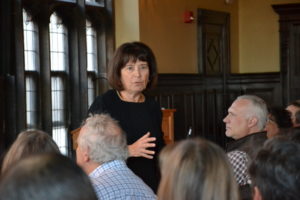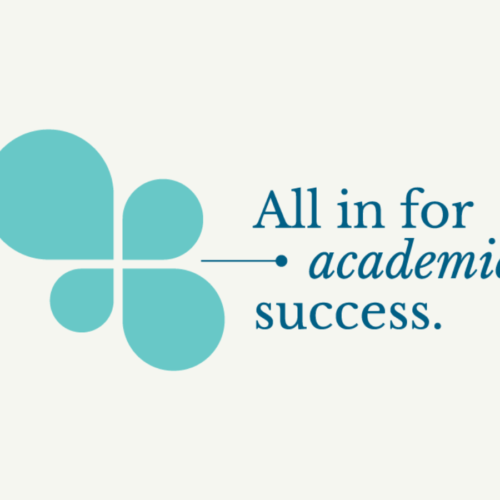Diane Bunce on How Research Can Help Us Understand the “Average Student”
On November 8, 2017, Diane Bunce, PhD, gave a talk on “Using Research to Change Our Perception of the Average Student” as part of the Innovations in the Undergraduate Education Speaker Series, co-sponsored by CIRCLE, The Teaching Center, the University Libraries, and Arts & Sciences Computing. Seventy-five faculty, staff, and students from Washington University and from universities from across the St. Louis region attended this talk, which took place in McMillan Café.

Dr. Bunce (Professor Emerita, the Catholic University of America) is a chemical-education researcher whose research focuses on the mismatch between how students learn and how we teach chemistry. In her talk in the Innovations series, Dr. Bunce detailed research that she has conducted at the US Naval Academy, which she described as a wonderful environment for teaching and for research on teaching. This research focuses on students who earn average grades in General Chemistry, a course taken by 1015 students per year at the US Naval Academy, where students combine rigorous academic schedules with military training.
Bunce’s research challenges conventional understandings of the “average student” as a student who does not care about the course or who does not try to learn the material. When examining the study strategies employed by students, Bunce and her team found that those who earned As and Bs consistently chose effective strategies (in this case, working problems on prior exams) from the beginning of the semester, while average students did not use effective strategies initially, but started to do so after the first exam. In other words, C students learned how to study more effectively over the course of the semester. Students who earned Ds and Fs, on the other hand, consistently used less effective strategies and did not shift to more effective strategies.
In another study Bunce and her colleagues found that while A and B students used “deep learning” approaches to solving problems throughout the semester, C students used a mix of “deep learning” and “surface learning” problem-solving strategies. It is unclear at this point whether the C students are transitioning to “deep learning,” or if they are unsure of which strategy is best.
The next phase of Bunce’s research involves prompting students to “think aloud” as they solve problems so that the research team can use qualitative methods to understand the thinking and motivations behind the choices that C students make among various strategies. By shedding light on the learning approaches that C students use, and why, Bunce hopes her research will contribute to a better understanding of what instructors can do to help these students learn and succeed in challenging courses.



